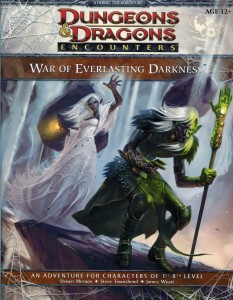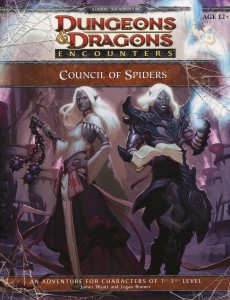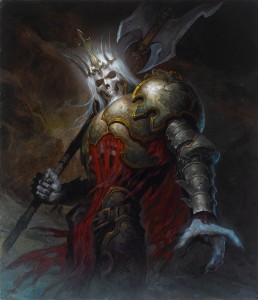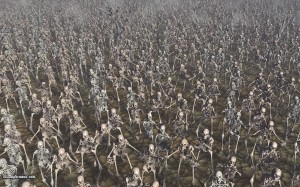Last week the adventure began when the PCs arrived in the logging community of Quaervarr on the edge of the Glimmerwood. The recent appearance of a wandering phantom had the locals worried and the PCs were encouraged to investigate. The heroes discovered the ruins of Methergrist, a long-abandoned Temple to Helm that lay in ruins. The PCs battled an Imp in the dungeon beneath the rubble eventually defeating it and banishing the wandering ghost. Their victory coincided with the emergence of The Darkening, dark filaments that shot up from a hole in the earth to spin a web of blackness across the sky blocking the starlight at night and masking the sun during the day.
Over the past few seasons at my FLGS the players have divided into two parties and then stuck to those parties throughout the entire season. This season we’re trying something a little bit different. Each week we’re randomly assigning players to one of the two tables. This lets the players and DMs meet and play with new people every week. Since each week is a complete mini-adventure and the PCs get to level up and take an extended rest between sessions this approach shouldn’t have a detrimental impact on anyone.
This week we had eight players again; the same number as last week. Two of our regulars were absent but two other familiar faces joined us again. My table included a Human Fighter (Slayer), Revenant (Pixie) Vampire, Shade Ranger (Hunter), and Shade Warlock (Binder).
The biggest negative criticism that I got from players after last week’s session was the lack of meaningful combat. They liked the quick, map-less battle and the fight against the Imp, but they didn’t feel that either battle really challenged the party or posed any real danger. Looking at what this week had to offer I didn’t see anything that addressed this concern so I decided to make a big change (keep reading).





